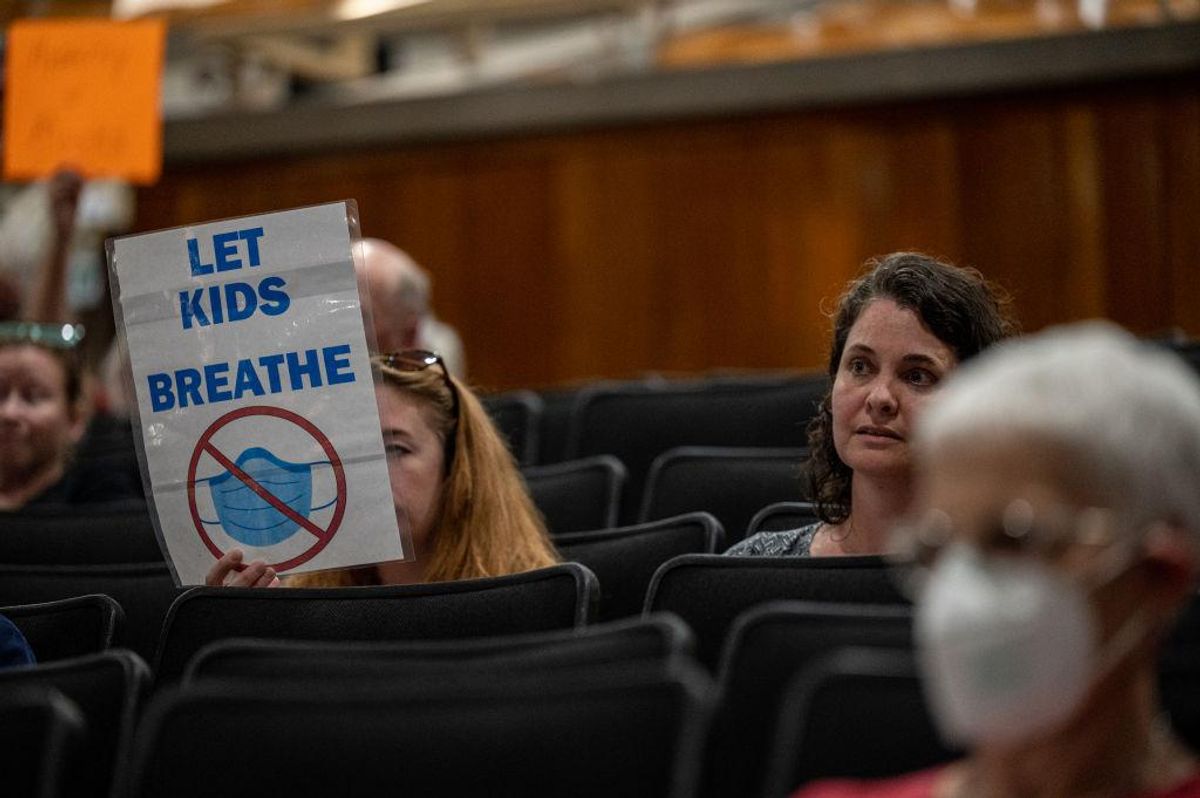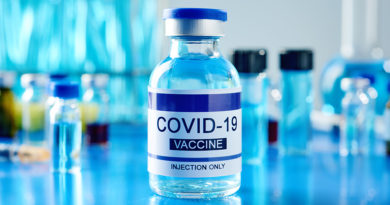Study finds mask mandates have no substantial effect on slowing COVID-19 spread

With students finally headed back to school for the fall, debate is raging nationwide over whether K-12 children should be required to wear face masks to reduce the spread of COVID-19. But a peer-reviewed study suggests that mask use and requirements during the pandemic had no substantial impact on reducing the spread of the virus.
Researchers from the University of Louisville examined COVID-19 case growth and mask use in the United States, comparing states with mask mandates to states without, and found that “mask mandates and use likely did not affect COVID-19 case growth.”
“For our study, we wanted to determine if effects of mask mandates and use were observable in the general population,” Dr. Damian Guerra, an assistant professor of biology at the University of Louisville, said. “Essentially, did the theory of mask effectiveness hold up on a population-wide level?”
Guerra observed that given the widespread adoption of mask requirements as a COVID-19 mitigation strategy, there was a need to evaluate the effectiveness of that policy. He told TheBlaze in an email that previous studies on mask-wearing using case studies, mannequin experiments, or theoretical models had produced conflicting results, but his study used states without mask mandates as a control group to better gauge the effectiveness of the policy.
The results contradict the popular belief that mask mandates effectively reduce the spread of COVID-19.
“It appears that mandates and typical mask use among the public have no substantial impact on COVID-19 growth,” Guerra said. “Early in the pandemic (Summer 2020), there was an association between lower infection rates and mask mandates and use. However, this association disappeared when transmission levels rose despite increased mask use in the Fall and Winter.
“While growth rates did decline in states after mask mandates became effective, rates declined to a similar degree in states without mandates,” he added.
Mask-wearing is an issue that has become controversial and politicized, with heated arguments between those who support mandates and those against. According to a recent Axios/Ipsos poll, a majority of 69% of Americans support mask mandates in schools, but opinion is sharply divided by political ideology. Democrats overwhelmingly support requiring masks in schools (92%) while just 44% of Republicans support mask mandates.
The U.S. Centers for Disease Control and Prevention recommends that anyone who is not vaccinated against COVID-19 and is older than age 2 should wear a mask in indoor public spaces.
The Delta variant of the coronavirus, which has proved to be more contagious than previous variants, is fueling fears that unmasked students and school faculty, even those who are vaccinated, could spread disease rapidly and endanger children who may be vulnerable to the virus, such as those with pre-existing health conditions or weaker immune systems. In response and in accordance with guidance from the CDC, states like New York have implemented mandatory mask requirements for students, staff, and visitors inside school buildings, with the goal of reducing risk of spreading the virus.
However, some concerned parents have objected to requiring their children to wear masks. In the United States, the average length of the school day is 6.64 hours. These parents are worried that requiring their children to wear face masks for that prolonged period indoors can be unsanitary, have negative effects on mental health and development, and put children at an increased risk of hypercapnia from exhaling and then inhaling CO2. In response to their concerns, Republican governors in eight states have taken steps to prohibit local school districts from implementing mask requirements without giving parents the ability to opt their kids out.
Asked about the risks versus the benefits of mask-wearing, Guerra said his study coheres with earlier randomized control trials that did not find surgical masks to lower probability of COVID-19 infection.
“Simulations with mannequins and theoretical calculations also support this, as virus-containing aerosols efficiently escape from masks that are not fitted respirators. Aerosols would presumably accumulate to a steady state level in congregant settings to enable infection levels like those in non-masked settings,” he explained.
“However, this process is time dependent, so it is possible that a simple surgical or cloth mask could offer some protection in a passing encounter of short duration. For workplaces or schools, where people congregate for hours at a time, you would expect much less protection.”
Guerra added that some studies have shown N95-type masks are much more effective than surgical or cloth masks at reducing virus spread, “but only when properly fitted and undamaged.” The CDC currently says Americans should not buy N95 respirators, that they should be reserved for health care workers.
As for the risks, Guerra said there are both known and potential harms in frequent masking.
“Surgical or cloth masks are safe for most people for short periods of time. However, chronic use is associated with enhanced susceptibility to skin barrier breakdown due to pH changes in facial skin. This can promote subsequent infection by bacteria,” he explained.
“Repeatedly taking off and putting on the same mask, touching a mask with unwashed hands, or wearing a used mask increase the likelihood of upper respiratory tract infections,” he added, noting that health care workers have reported greater fatigue, headaches, and psychological stress from mask-wearing. The study also notes that masks can “interfere with social learning in children.”
The best methods for reducing spread of COVID-19 are “vaccination, improved building ventilation, and freely available N95-type respirators for high-risk individuals.”
“Children younger than 12 are not yet eligible for vaccination, but the risk of serious COVID-19 illness in children is lower than the risk of serious flu illness,” Guerra said. “For reference, less than 0.1% of COVID-19 deaths are children. For higher risk adults and children, N95-type respirators could be made freely available and social distancing encouraged. In addition, people should be encouraged to stay home if they have respiratory symptoms and/or a positive SARS-COV-2 PCR test.”
Guerra emphasized that his study is “not a comprehensive referendum on all masks in all scenarios.”
“Theoretical and mannequin studies suggest that mask efficacy against viral pathogens is influenced by multiple factors, including respiratory fluence rates, viral load and contagiousness, exposure time, and mask type,” he said, adding that “N95-type respirators (KN95, R95, P95, etc.) can filter viral aerosols, whereas surgical and cloth masks do not.”
“Surgical and cloth masks may offer marginal protection during short duration encounters with low viral loads by slowing droplet emission, but the probability of infection is already low in these instances. For longer duration encounters and/or congregant settings where aerosols tend to accumulate, surgical and cloth masks are considerably less effective.”


